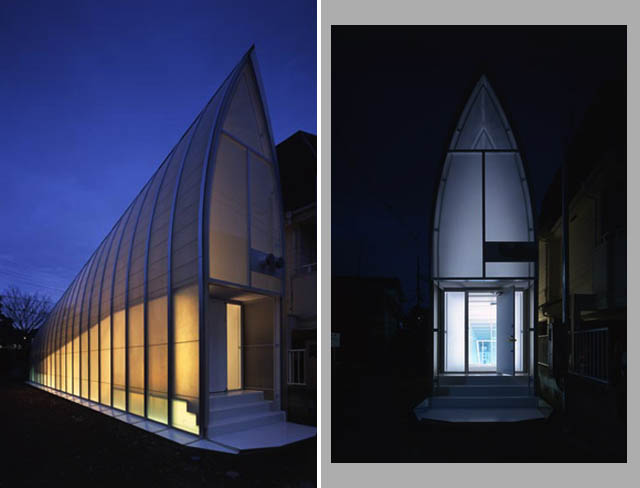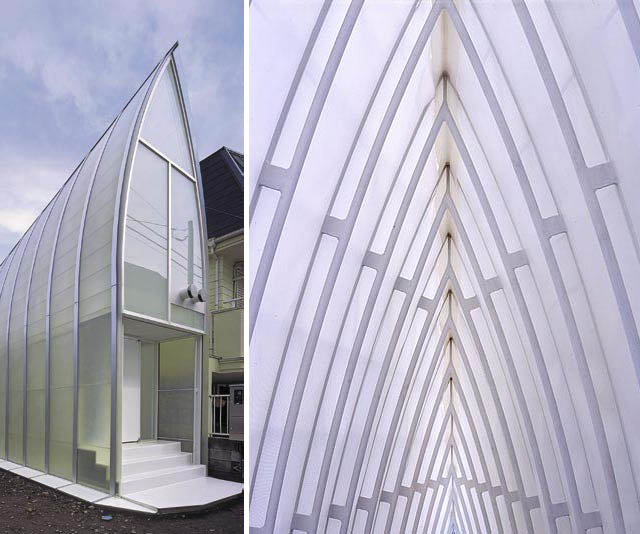
Ned Pelger's blog on construction, design and other weirdness. Email him at ned@constructionknowledge.net
Please help him win his readership competition against his son Lex at the Construction Phone Apps Blog
I’ve been speaking recently to a young friend who has just moved to Montana. He’s making some major life changes and trying to determine the man he wants to become. Do you still struggle with those questions? Or is that phase of your life settled and behind you? I hope it’s not.
Now I certainly don’t want to go back to being 25 years old and have nothing settled. I like knowing core beliefs and having a general direction. Yet I’m also glad that every day continues to challenge me to better understand truth. I discard old ideas that no longer pass the smell test and embrace new ones. Life long learning requires us to check our arrogance at the door and examine each experience anew.
As my young friend discussed planning, he expressed his responsibility to control his actions, his choices and ultimately his life. His past hadn’t included too much control in those areas and I loved hearing his desire to tackle the hard task. I know that true joy in life comes from the hard path (the road less followed), not the easy one.
I talked to him about the Steven Covey concept of Begin with the End in Mind. Covey teaches that everything is created twice. Anything that becomes must first be conceived. We humans get to be the conceivers.
As a simple example, a building must first be designed with plans and specs (the first creation). Then it gets built (the second creation).Even if a carpenter builds his own piece of furniture without putting a single pencil mark on paper, he still has the first creation in his mind, then builds the second creation.
We are responsible for this first creation. Learn to live your day, your week, your year first in your mind. Practice the art of considering options, planning, day dreaming and all other manner of first creation. Please don’t live a life just following the script of your parents, bad experiences, early decisions or any other thing. Realize that you have the responsibility to conceive of a future outcome that brings you joy, that maximizes who you could be, that helps others and helps you.
On the other hand, you can just take life as it comes without thinking too much. The mugshot below illustrates how I imagine that might work out for you.

Named “A House in Tokyo” this funky little dwelling had a limited width footprint. The design firm Atelier Tekuto combined beautiful lines and practical materials to create this cool little house.

The elegance gets stripped away a bit with the daylight view, though it’s still wonderful design.

The structure shown in the photos below adds to the ethereal feeling.

images credit: Atelier Tekuto
The next time you get asked to do some task that seems impossible, think of how the architect must have initially responded when challenged to design a house on this spit of ground. Try to not lead with “That will never work” and instead consider how you might draw from your creativity. Most of us say we aren’t creative, but everyone has creativity. You just have to use it and develop it.
If you’re a regular follower of this blog, you know I want to help you improve every aspect of your life. I usually write about construction issues or various people skills, which should help you advance in your career. Life’s not just work, though.
How many times a day do you think about sex? It’s a big number for me. I remember a Construction Supervisor told me, when I was in my early thirties, that after 40 he just stopped thinking about it. I thought that was one of the worst things I’d ever heard. I can report, at 51, that I don’t see that big change anywhere on my horizon.
So when I saw the cartoon below, I thought I needed to share it.
 Let’s try an experiment. The next time you’re getting frisky with your significant other, try out this little chestnut and see how it works. It seems like an uber romantic thing to say. We all need all the help we can get in that department, so give it a try. If you’ve got the gumption, post a comment about how it worked…for the sake of science, of course.
Let’s try an experiment. The next time you’re getting frisky with your significant other, try out this little chestnut and see how it works. It seems like an uber romantic thing to say. We all need all the help we can get in that department, so give it a try. If you’ve got the gumption, post a comment about how it worked…for the sake of science, of course.
When TBW and I were in Las Vegas a few weeks ago to see the World of Concrete exposition, we stayed at the Bellagio Hotel. Next door, MGM Mirage is building, “The sort of project God would build, if He had the money,” according to one of the casino competitors quoted in The Economist. The $8.6B City Center project circles the drain, perhaps to become one of history’s great design and construction failures. Dubai World is a joint venture partner and has sued and refused to provide the next $200M payment.

The Fountains at the Bellagio Hotel
I’ve written about this project before, the concrete crews changed some rebar layouts in the foundations and the building inspectors claim the construction inadequate. They all compromised by changing from 80 stories of condos to 40 stories. I can only imagine what that does to the pro forma.
Many of the casinos expanded, believing that Las Vegas was immune to the effect of an economic downturn. Turns out, they aren’t. The gambling revenues fell 10% last year and look to continue to decline this year. With lots of vacant room now, the City Center project will expand that glut…if MGM Mirage avoids bankruptcy, actually gets the financing done and opens the facility.

City Center Cranes
In a classic construction management dispute, Dubai World claims in its lawsuit that construction costs have spiraled out of control. MGM Mirage claims all the budgets have been approved by the partners. As in, “Oh, did you expect me to look at that when I signed it?”
After more struggles and failures than I care to remember, I’ve finally got the first three ConstructionKnowledge.net training videos posted on YouTube. Please do me a favor and click on each of the links below, watch and give a rating. I believe I’ve incorporated most of the suggestions from readers for improving the videos and am curious what you think.
Converting Inches to Decimal Feet for Construction Supervisors teaches one of the most useful skills I’ve ever learned. Did you find this video helpful? Any comments?
Next, I have Soil Density and Proctor Tests for Construction Supervisors which shows some practical basics about soils and compaction on site. As an aside, I remember when I first began learning about soils in engineering school. My professor was this French guy I could barely understand who taught the entire semester about LePlace Transformations. He was studying how these mathematical models could predict soil behavior. I never knew what he was talking about, except when he occasionally mentioned soils and that anyone can go to the US Navy Soils Manual and learn all the simple basics on their own. I tried to be more interesting and practical in my teaching and am interested in your thoughts about the soils video.
Finally, I have The Secret of Success for Construction Supervisors redone and much improved…I think. Please let me know what you think.
I still get surprised when I see companies lie in their advertising. We are building a 12 unit condo project in Lititz called PilgerHaus and need to construct an exterior elevator shaft. After purchasing the elevator, I saw that hydraulic elevators want to be between 60 to 90 degrees F. I hadn’t thought about insulating the 8″ block wall, but decided we could foam the cores. I knew I’d seen some good R values from that system. I found a manufacturer’s data sheet that showed R values of 14 and 9 for various density 8″ concrete blocks.
I talked to my old buddy and masonry expert Harold Haldeman of New Holland Concrete to determine which density block we use. He informed me that nobody makes a block with the aggregate light enough to achieve R 14. Maybe the foam manufacturer was confused, thinking they were using some block available only in heaven.
Harold also showed me the National Concrete Masonry Institute TEK Manual website that his company helps support. That website provides all the most current masonry technical reports for free. These are useful and practical reports, full of information that comes in handy for anyone working around masonry. I had purchased a set of these reports 10 years ago for over $100, but hadn’t recently updated. I was thrilled to find all these updated reports for free online.
When I looked at the Energy section, under R values, I found that normal weight concrete block (about 130 lb/cf) have an R value of 4 and lightweight concrete block (under 105 lb/cf) have an R value of 5.6. Since we need the normal weight block for the strength, I realized that foaming wasn’t going to be a good option, we need to wrap the shaft in rigid insulation, than put our finish material over the insulation. It’s great to be able to find a value like that so easily and for free.
Definitely check out the NCMA TEK website and bookmark it. You will want to consult it with other masonry problems as well. I know I often use it to find quick masonry retaining wall designs, fire ratings or noise control designs.
We’ve heard your feedback and updated the Forum page on ConstructionKnowledge.net to better meet your needs. I think you’ll find it a great place to connect with others in this wonderful business. You can rant about that idiotic boss, ask a technical question that someone else might actually be able to answer or just chat. Please hop on the site and read what others are saying, then sign in and make a post yourself.
If you want to see how a similar construction forum works, go to ContractorTalk and check it out. From what I can tell, though, ContractorTalk mostly consists of residential contractors who own their own firms. The focus of the ConstructionKnowledge.net Forum will be more for commercial and industrial building construction supervisors.
If you enjoy this blog, please check out the Forum and let me know what you think.
I got one of those close call phone calls yesterday. You know the kind I mean, when a tragedy was just narrowly avoided. As I heard the details of the old stone wall falling 6′ to 12′, just missing a mason below, I instantly played the worse scenario in my head. How my cheerful buddy, who runs the concrete and masonry company, now lies dead under a pile of loose limestone. How I deal with his wife and kids at the funeral. How I forever question myself about thinking the wall was stable on bedrock, rather than on some large boulders that just looked like bedrock.
When I worked as a consulting engineer 25 years ago, the wife of an engineer buddy of mine was a midwife to lots of Amish families. While waiting for the babies to arrive, they had plenty of time to talk. When these farm families asked what her husband did, she explained that he designed sewer systems. Often these simple folks just couldn’t get the concept of design. Building they could understand, but what does someone do that designs?
In China, stemming from Confucianism, engineers “Build” rather than “Design”. So the engineering profession doesn’t have the same status there. There are few engineering courses or books to study. Apparently, no general consensus exists for engineering ethics or how the profession should operate.
To design is to conceive in the mind or to create a plan. To build, one must first design, even if only with a fleeting thought. The Design Part of Design/Build, though, takes more than this fleeting thought. It entails a knowledge of the physical realities of the world combined with a sense of the most efficient way to solve a particular problem.
As I evaluated the fallen stone wall, I called Tom Zug, my friend and structural engineer, whose opinion I greatly respect. Tom came over and we stood at the bottom of an old (1754 and 1870) stone and brick 4 story building and discussed how to stabilize walls. We have both studied engineering (how the physical world works) and have varied experiences to pull from. We included the Mason (he changed his pants by then) and the Construction Supervisor in our deliberations. We arrived at a design, that now will be executed by the various contractors.
You may be more drawn to the design side of this business or perhaps to the build side. I encourage you, in either instance, to learn to appreciate the challenges and strategies of both design and build. Read through sections of the Construction Knowledge database and learn specifics. Commit to learn and grow, to advance in this great business by knowing more and executing better.